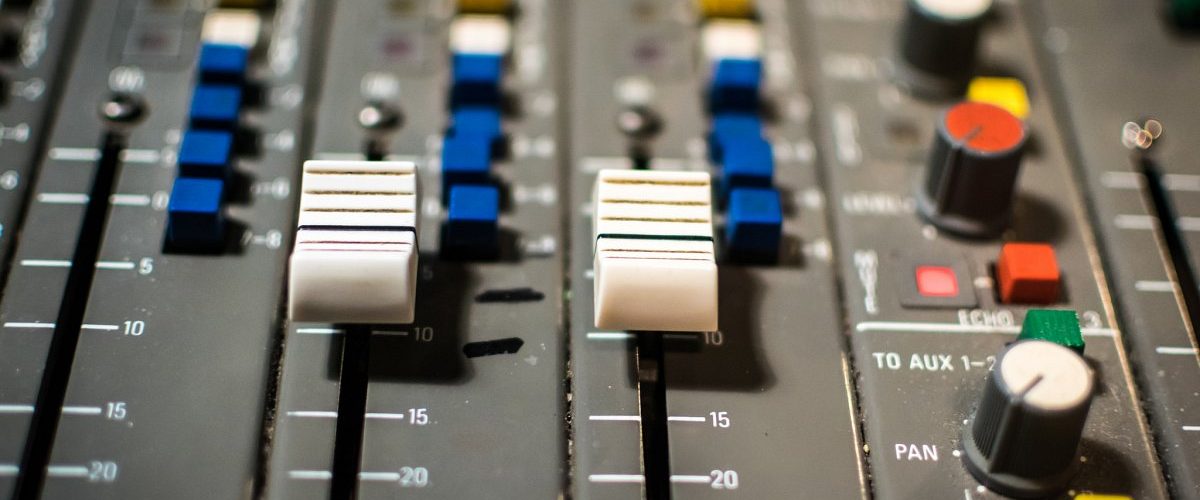Top Tips for Mixing Bass
22nd June 2017

Bass can be one of the most tricky elements of a mix to get right – especially if you have a bassist looming over your shoulder claiming the mix “needs more low end, bro” throughout the entire process. Here are a few pointers to help your bass shine in a track and hopefully keep the bass player off your back!
Drums first
I know I know, it’s an article about bass. But we have to keep the drummers happy too. There really no is “correct” way to approach a mix. Some people start from the bottom up, others mix around vocals. A handy tip is to start with your drums. If you think about the audio spectrum, drums contain elements which touch on basically every frequency band. You have your kick in the lows, toms and bottom-end snares in the mids and cymbals in the high end. If you get your drums evenly balanced both in volume and EQ, you should find it easier to fit the bass around the drums. This will make it clearer where the dominant sub frequencies are coming from and will allow you to judge which spaces on the audio spectrum need filled by your bass.
EQ
EQing is probably one of the most important aspects of getting instruments to sit right in a mix. The most important thing is that all of your elements have space to shine. Your warm, funky bass might sound amazing when you solo it but if it sounds muddy in the context of a mix then what’s the point? When fitting bass into a mix it is important not just to EQ the bass correctly, but to EQ the element around it correctly so it has a space to sit in your mix. Placing low pass filters on things like guitars and cymbals so they sit nicely over the top of your bass is imperative to achieving a solid mix. Subtractive EQing is a producer/engineer’s best friend when it comes to bass. Take useless frequencies away rather than boosting the ones you want to hear more. It’ll help your bass shine without disturbing other elements in the mix!
Saturation
We’ve talked briefly about saturation in another blog, but yet here we are again singing its praises. It’s just that good. Saturation, as we’ve discussed in the above article, is great for putting on drums as an alternative to a buss compressor. It can help to glue everything together while adding some pleasing harmonics. However, the beauty of saturation doesn’t end when you take your focus off the drums buss. A good tip with saturation is using it instead of an extra layer. Take a bass sound for example. If you don’t feel your bass has enough presence in a mix, rather than adding another mid/top layer and running the risk of clogging your mix, add a saturation plugin on the bass channel. Saturators can really help bring out harmonics in basses and add some vintage warmth. One saturation plugin we always recommend is FabFilter’s Saturn. It’s an incredibly versatile saturation and distortion plugin, packed with features that will guarantee you find the tone you’re after. It’s also multi band so you can really fine tune the frequency band you want to bring out harmonics in. Lovely stuff!
Compression
Bass sounds are one of the more awkward element when it comes to compressing. We’ve done a part one and part two compression series detailing how compressors work and their basic functions. When it comes to bass, there is a fine line between achieving a tight bass and removing all the low end from it. It is important to not over compress and choose an attack time which will allow the low, initial transient to pass through before the compressor kicks in to compress the tail and tighten up the sound. A common technique when compressing bass is to add two or three compressors with less effect rather that one compressor slamming the who sound. This will give you more control over things like ratios and release times.
Whether it be electronically synthesised or acoustic, the bass is absolutely essential to nail in a mix. It is the element which will hold the mix together and hopefully provide a silky smooth low end to your track. If done right, most of the other elements should sit nicely over the top and leave you with a nice, evenly balanced mix which should keep the whole band happy!
Until next time,




